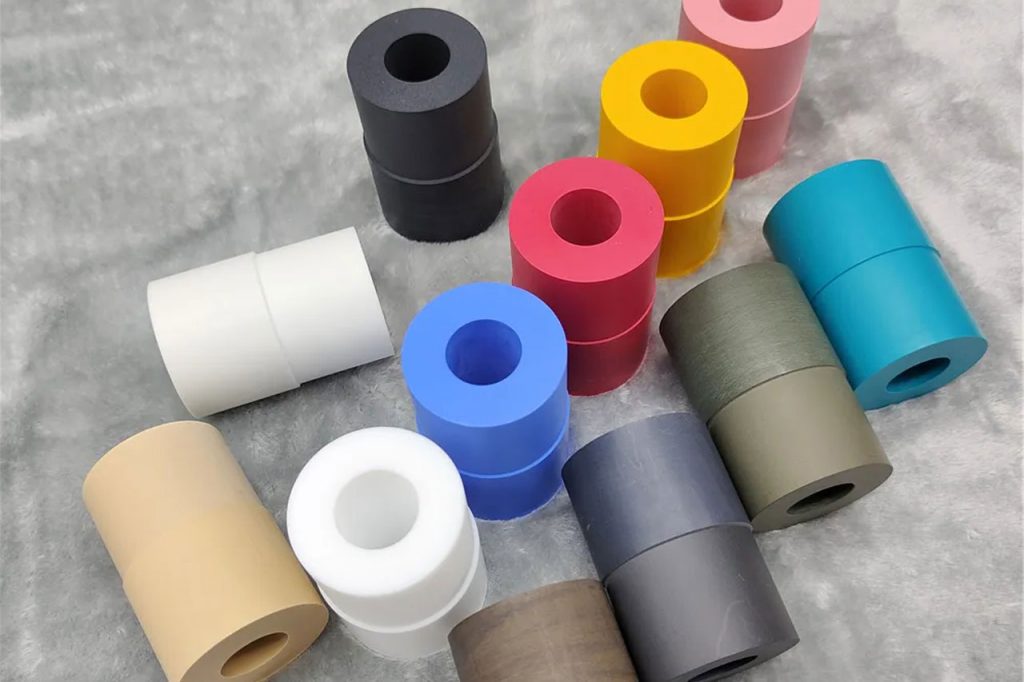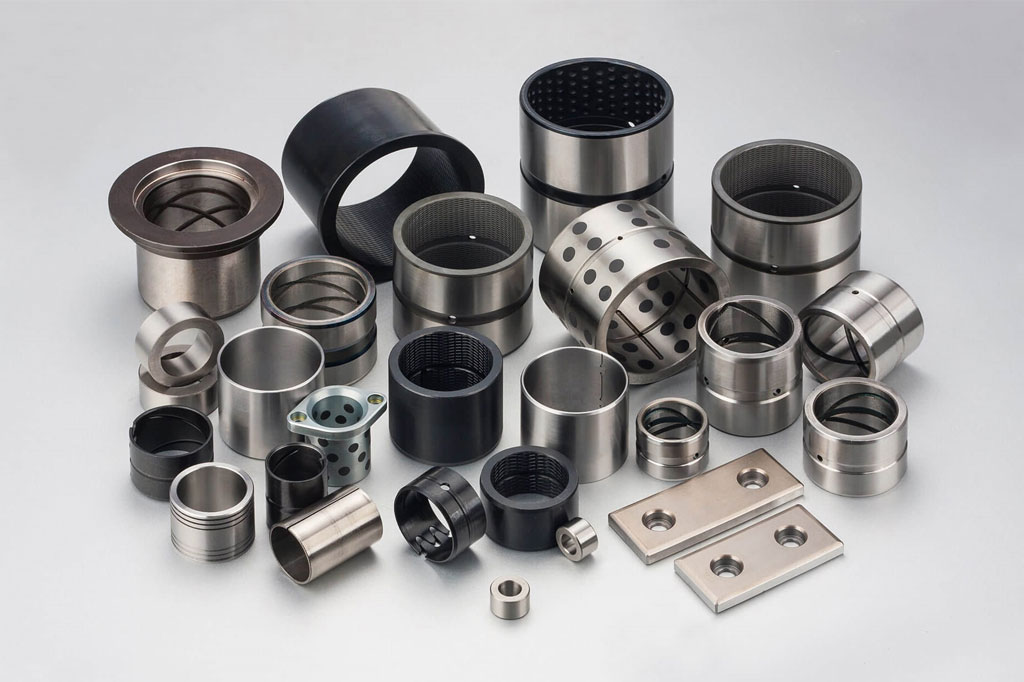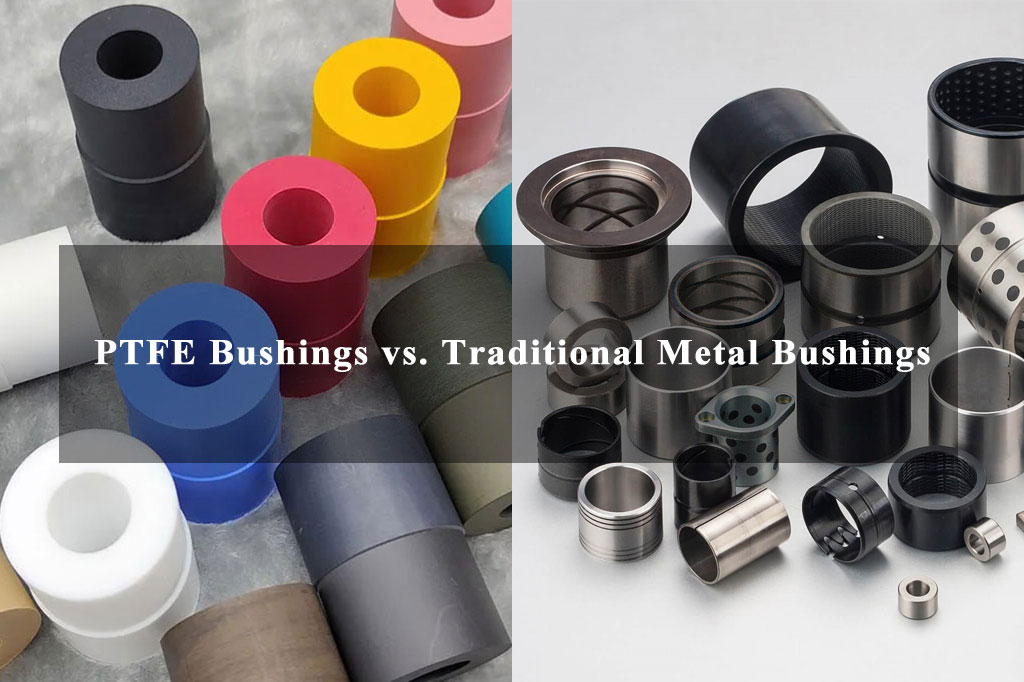In mechanical systems, bushings play a critical role in reducing friction, absorbing shocks, and enhancing the longevity of moving components. Among the many types of bushings available, PTFE bushings and traditional metal bushings stand out due to their distinct material properties and application suitability.
In this article, we will explore the key differences between PTFE bushings and metal bushings to help engineers and designers make informed decisions.
What Are PTFE Bushings?

PTFE bushings are made from or coated with PTFE, they are commonly used in applications where lubrication is minimal or not possible and where the environment demands resistance to chemicals, moisture, or high temperatures.
Key Features:
- Self-lubricating
- Chemically inert
- Low coefficient of friction
- Good thermal resistance
- Lightweight
- Non-magnetic and non-conductive
Advantages of PTFE Bushings
- Self-Lubricating: Because they’re self-lubricating, PTFE bushings require no added grease or oil, making them perfect for settings where lubrication can’t be applied, such as food‐processing lines, medical instruments, or sterile cleanrooms.
- Corrosion and Chemical Resistance: These bushings are inert and unaffected by most chemicals, acids, and solvents, which makes them highly durable in corrosive environments.
- Low Friction: PTFE offers one of the lowest coefficients of friction among engineering materials, minimizing wear and energy consumption.
- Noise Dampening: They effectively reduce vibration and operating noise, beneficial in appliances, automation equipment, and automotive interiors.
Disadvantages of PTFE Bushings:
- Lower load and impact resistance
- Prone to cold flow (deformation under pressure)
- More expensive per unit than basic metal bushings
What Are Traditional Metal Bushings?

Traditional metal bushings are usually made from materials like bronze, brass, steel, or aluminum. They are valued for their mechanical strength, load-bearing capacity, and durability. Metal bushings often require lubrication and are ideal for high-load, high-impact, or high-temperature environments.
Common Materials:
- Bronze: Excellent wear resistance and good for heavy loads
- Steel: High strength and good for high-impact environments
- Brass: Corrosion-resistant and softer than steel, good for general applications
Advantages of Metal Bushings
- High Load Capacity: Traditional metal bushings, especially bronze and steel, can withstand heavy radial and axial loads and are suitable for rugged industrial environments.
- Long Service Life: When properly maintained and lubricated, metal bushings offer excellent wear resistance and longevity.
- Thermal Stability: Metals have a higher melting point and retain structural integrity better under extreme temperatures.
- Wide Material Options: Depending on application needs, metal bushings can be made from a wide range of alloys for customized performance.
Disadvantages of Metal Bushings
- Require ongoing lubrication and maintenance
- Can corrode or seize in harsh environments
- Heavier, potentially affecting system efficiency in lightweight assemblies
Comparison Table: PTFE Bushings vs. Traditional Metal Bushings
| Feature/Property | PTFE Bushings | Traditional Metal Bushings |
|---|---|---|
| Friction | Very low (self-lubricating) | Medium to high (requires lubrication) |
| Wear Resistance | Moderate | High (especially bronze and steel) |
| Temperature Resistance | Up to 260°C (500°F) | Up to 315°C (600°F) depending on metal |
| Corrosion Resistance | Excellent | Varies; steel rusts without coating |
| Chemical Resistance | Excellent | Poor to moderate |
| Load Capacity | Low to moderate | High |
| Maintenance | Minimal | Requires regular lubrication |
| Noise Reduction | Excellent | Moderate |
| Weight | Lightweight | Heavier |
| Cost | Higher (material cost) | Lower to moderate |
Application Suitability
| Application Area | Preferred Bushing Type | Reason |
|---|---|---|
| Food Processing Equipment | PTFE Bushing | Non-toxic, self-lubricating, corrosion-resistant |
| Heavy Machinery | Metal Bushing (Bronze/Steel) | High load capacity and durability |
| Aerospace and Automotive | PTFE or Composite PTFE | Lightweight, low maintenance |
| Chemical Plants | PTFE Bushing | Excellent chemical resistance |
| Agricultural Equipment | Metal Bushing | Handles dust, debris, and impact |
| Medical Devices | PTFE Bushing | Clean, quiet, corrosion-resistant |
Hybrid and Composite Solutions
Many modern applications now use composite bushings, combining PTFE with metal backings or fillers to balance strength and low friction. For example:
- PTFE-lined steel bushings offer a strong base with a low-friction surface.
- Filled PTFE bushings incorporate additives like glass or bronze for improved wear resistance and load capacity.

